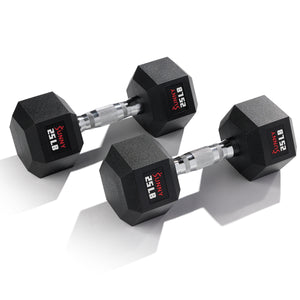Box jumps, lateral shuffles, power push-ups – these may sound like flashy moves reserved for very fit people to “show off”, but there is more behind the movement. These exercises fall into a category called Plyometric Training, which is also sometimes referred to as reactive training(1). Why? Because it is just that – training the body’s fast twitch muscle fibers to react as efficiently as possible, producing a large amount of force in as little time as possible(2).
While this may sound like training that only elite athletes should bother with, there are several benefits that come from Plyometric Training, beyond just looking impressive while doing it. Anyone, regardless of fitness level, can greatly benefit from incorporating plyometrics into their fitness routine. While it is undoubtedly a great way to train the cardiovascular system, it is also one of the most effective ways to train the nervous system and fast twitch muscle fibers, improve coordination, and prevent or minimize injury.
Training the Nervous System – Improved Neuromuscular Efficiency
While you are obviously training your physicality pretty vigorously during Plyometric Training, you are also training your brain. More specifically, you are training your nervous system. Every muscle in the body has a component called the muscle spindle, which sends information about the length of the muscle to your brain and nervous system(3). These signals move through the sensory nerve to your spinal cord, which causes your motor neurons to fire and contract the muscle that was lengthened. This is what we call “The Stretch Reflex”(4).
You know when the doctor uses a mallet to tap your knee and your leg kicks? This is an example of that process. This is also the same process your body goes through with quick jumping-based movements used in Plyometrics. When you train plyometrics, you are engaging and training your nervous system to become more efficient.
Improved Coordination
As a result of training the nervous system through plyometrics, neuromuscular coordination also improves. The longer you stick with a plyometric training program, movements will gradually become more automatic during exercise and other activities of daily living. Through reinforcing a motor pattern, your body and brain will learn how to fire together as quickly as possible to make complex movements feel and look more natural. Some studies show it takes just 6-8 weeks to start to see these changes take place(5).
Fast Twitch Muscle Fibers
Every muscle in the human body is comprised of two types of muscle fibers: Type 1, or “slow-twitch,” fibers and Type 2, or “fast-twitch,” fibers. Plyometrics are a great way to train your fast-twitch muscle fibers, improving your muscle’s power output and your body’s ability to reach peak velocity and agility. Plyometric training is a great way to ensure a well-rounded fitness routine, and that all fibers in the muscles are being trained to their fullest potential(6).
Injury Prevention/Minimization (Falls, Absorbing Impact)
Your nervous system can only make your muscles contract as quickly as they have been trained to. While you likely won’t need to move as quickly as possible for most of your activities of daily living, it is crucial to be prepared for when accidents happen, and you have no choice but to react as quickly as possible for your safety(7). Your chances of minimizing injury as the result of a fall or other accident are greatly increased by training your body’s ability to swiftly respond to an impetus and absorb impact.
In Conclusion
Plyometrics are a fantastic way to train your body and brain to work together and prepare you for the unexpected. If you are looking for a place to start, the SunnyFit® app offers a premium STAR Plyometric Training program, created by yours truly (Sunny Trainer Mara Magistad). While I am admittedly biased, this is a great place to start if you are looking for a 6-8 week training program to track your progress and keep you accountable. Additionally, the SunnyFit® app and YouTube channel have an array of excellent offerings where you can try out other plyometric workouts.
Whatever it may be, I highly encourage you to find some method of plyometric training that works for you, so you can begin reaping the benefits as soon as possible. With a little consistency and guidance, you will be amazed at what you are capable of and how strong you will feel in all aspects of life – both in and out of the gym.
1. Clark, M. A., Sutton, B. G., & Lucett, S. (2007). NASM Essentials of Personal Fitness training. http://ci.nii.ac.jp/ncid/BB19387541. Accessed 4 December 2023.
2. Solan, M. (2023, August 2). Plyometrics: Three explosive exercises even beginners can try. Harvard Health. https://www.health.harvard.edu/blog/plyometrics-three-explosive-exercises-even-beginners-can-try-202308022960#:~:text=What%20are%20plyometrics%3F,increases%20speed%20and%20jumping%20height. Accessed 4 December 2023.
3. McNeely, E. Introduction to Plyometrics: Converting Strength to Power. NSCA’s Performance Training Journal, Vol. 6(No. 5), 19–22.
4. Bhattacharyya, K. B. (2017). The stretch reflex and the contributions of C David Marsden. Annals of Indian Academy of Neurology, 20(1), 1. https://doi.org/10.4103/0972-2327.199906. Accessed 4 December 2023.
5. Davies, G. J., Riemann, B. L., & Manske, R. C. (2015). CURRENT CONCEPTS OF PLYOMETRIC EXERCISE. PubMed, 10(6), 760–786. https://pubmed.ncbi.nlm.nih.gov/26618058. Accessed 4 December 2023.
6. Plotkin, D. L., Roberts, M. D., Haun, C. T., & Schöenfeld, B. J. (2021). Muscle Fiber Type Transitions with Exercise Training: Shifting Perspectives. Sports, 9(9), 127. https://doi.org/10.3390/sports9090127. Accessed 4 December 2023.
7. National Academy of Sports Medicine. The Importance of Reactive/Power Training. National Academy of Sports Medicine. https://blog.nasm.org/training-benefits/the-importance-of-reactivepower-training. Accessed 4 December 2023.



























Add Your Name & Email
Please enter your name and email to continue.We won’t display your email publicly.
2 comments
testing purpose only
Love love your workouts!